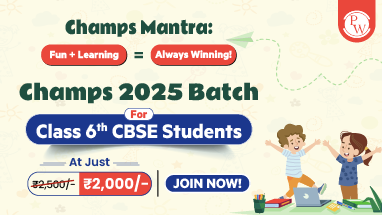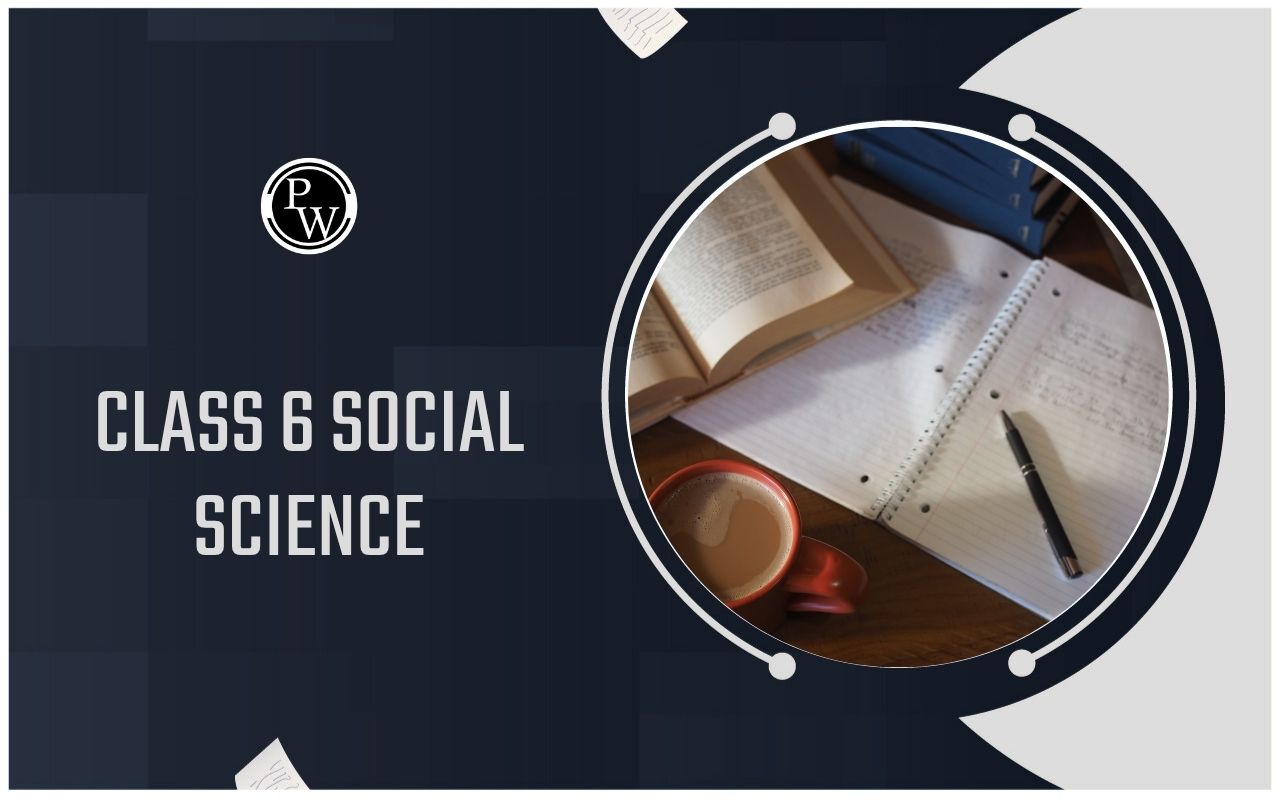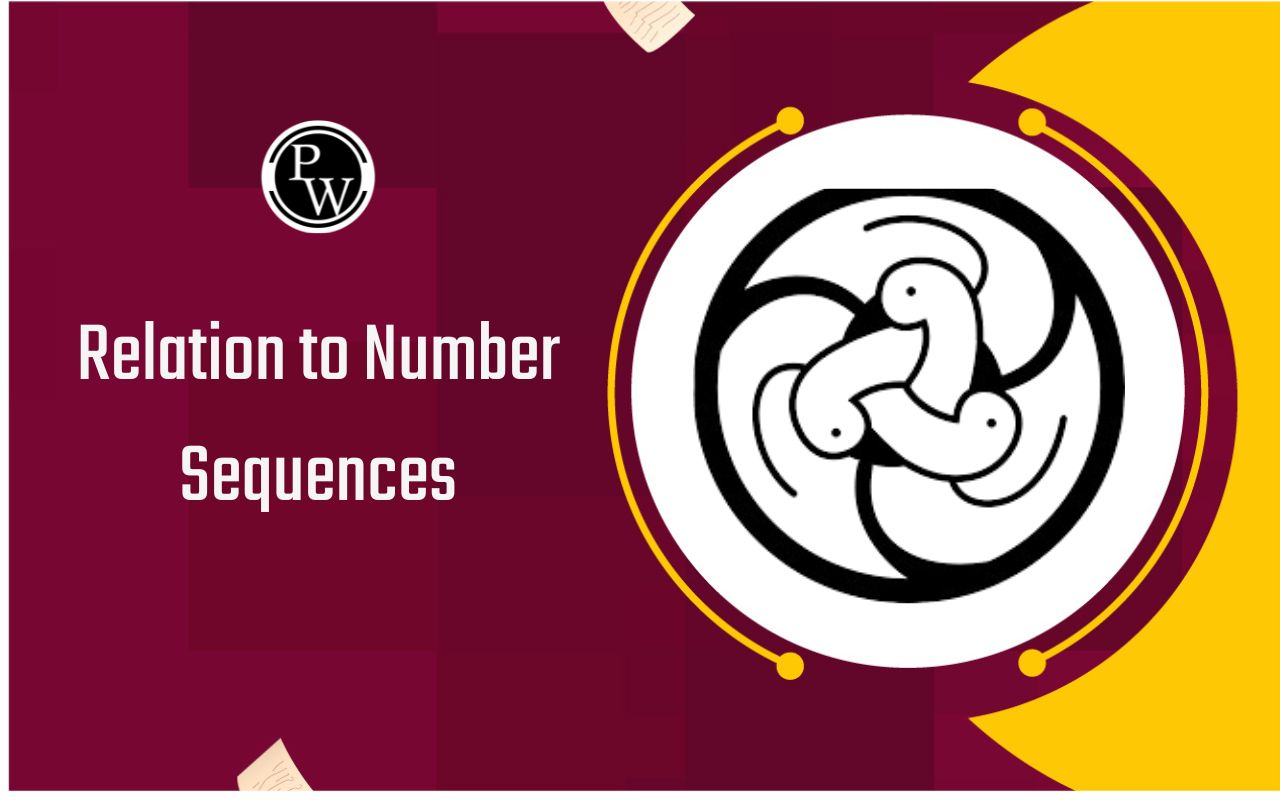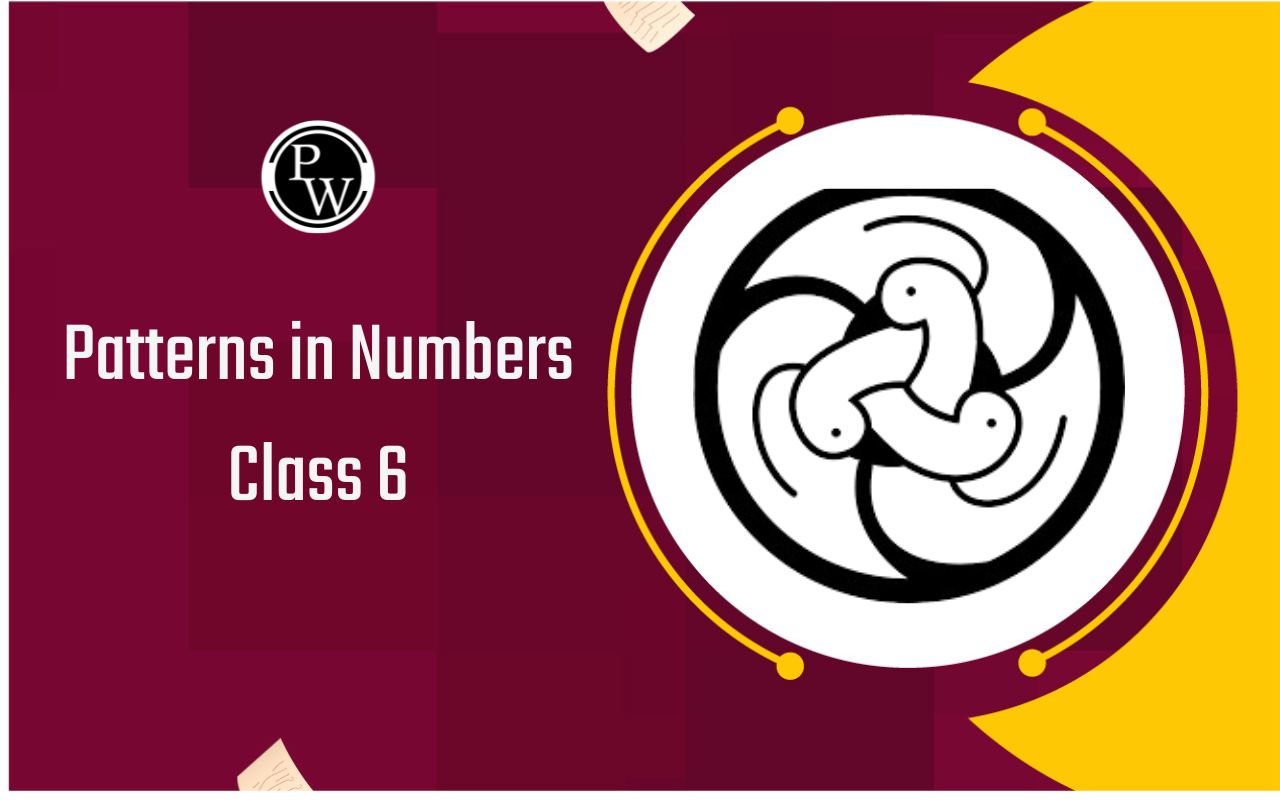
NCERT Solutions for Class 6 Social Science History Chapter 7
NCERT Solutions for Class 6 Social Science History Chapter 7: The Mauryas formed a dynasty with three important leaders — Chandragupta, his son Bindusara, and Bindusara’s son, Ashoka. Ashoka, the third ruler of the Maurya dynasty in India, is well-known for turning away from violence and adopting non-violence after seeing the terrible effects of war. Observing the significant loss of lives, he decided to stop engaging in wars. The NCERT Solutions for Class 6 Social Science History Chapter 7, titled "Ashoka, The Emperor Who Gave Up War," can be found in the NCERT textbook "History – Our Pasts – I". These solutions, sourced from the NCERT textbooks, are helpful for school exams and provide the correct answers to the exercises at the end of the chapter.NCERT Solutions for Class 6 Social Science History Chapter 7 PDF Download
NCERT Solutions for Class 6 Social Science History Chapter 7 Ashoka, The Emperor Who Gave Up War
NCERT Solutions for Class 6 Social Science History Chapter 7 are given below. Students should also check NCERT Solutions for Class 6 for other subjects. Q.1 Make a list of occupations of people who lived within the Mauryan Empire. The following were the occupations of those people who lived within the Mauryan Empire:- Farming
- Handicrafts
- Trading
- Herding
- Hunting and gathering
NCERT Solutions for Class 6 Social Science History
Q.3 State whether true or false: 1. Ujjain was the gateway to the north-west 2. Chandragupta’s idea was written down in the Arthashastra 3. Kalinga was the ancient name of Bengal 4. Most Ashokan inscriptions are in the Brahmi script Solution: (a) False The Mauryan province of Taxila was the gateway to the north-west. (b) False Arthashastra in Sanskrit which means economic science. The Ideas of Kautilya, known as Chanakya, were written down in Arthashastra. (c) False Kalinga refers to the coastal region between the Godavari and Mahanadi rivers, in what is modern-day Orissa, not Bengal. (d) True Brahmi Script is the parent language of Hindi and many other north Indian languages. Ashokan inscriptions were written in Brahmi script. Q.4 What were the problems that Ashoka wanted to solve by introducing dhamma ? Solution: Emperor Ashoka wanted to solve the following problems by introducing dhamma: 1. Inter-religious conflicts between his subjects. 2. Animal sacrifice during religious rituals. Ill-treatment of servants and slaves. Constant disputes between neighbours over petty issues. NOTE: ‘Dhamma’ is a Prakrit word which means dharma.NCERT Solutions for Class 6 Social Science History Chapter 2
Q.5 What were the means adopted by Ashoka to spread the message of dhamma? Solution: Ashoka adopted the following means to spreads his message of dhamma:- He appointed officials called Dhamma Mahamatta who went to different places to spread the message of dhamma.
- He had his messages inscribed on pillars, so that common folk could read them.
- Officials were directed to read out the messages inscribed on pillars to those who could not read.
- Most of them were prisoners of war.
- Some belonged to the lowest social order, specifically Shudras.
- The concept of human rights was virtually non-existent during that period.
- No one would dare defy the supreme order of the emperor himself.
- Those who would disobey the emperor would be severely punished by his officials.
- The Emperor was the supreme commander of the Mauryan Empire. Thus, his word was law and had to be obeyed to the fullest extent.
NCERT Solutions for Class 6 Social Science History Chapter 5
Ashoka, The Emperor Who Gave Up War Summary
The NCERT Class 6 Our Pasts – I Chapter 7 talks about the following topics:- A very big kingdom = an empire
- How are empires different from kingdoms
- Ruling the empire
- Ashoka, a unique ruler
- Ashoka’s war in Kalinga
- What was Ashoka’s dhamma

NCERT Solutions for Class 6 Social Science History Chapter 7 Extra Questions
1. Describe the ways in which the Buddha tried to spread his message to the people.
Ans:- Buddha shared his teachings in Prakrit, the language of regular folks, to ensure everyone could grasp his message easily.
- He urged people to think independently instead of just accepting his words.
- Buddha personally showed how to live a simple life.
- Gautam Buddha travelled around, spreading his message to people of all classes, including the common folk and those from different social groups.
NCERT Solutions for Class 6 Social Science History Chapter 1
3. What were the questions that Upanishadic thinkers wanted to answer? Ans: Upanishadic thinkers were curious about what happens after we die. Some were curious about why people should make sacrifices. They believed there must be something lasting in the world that continues even after death. These thoughts are written down in the Upanishads. 4. What were the main teachings of the Mahavira? Ans: The main teachings of the Mahavira are: 1. He taught a basic belief: people wanting to discover the truth should leave their homes. They must strictly follow the rules of ahimsa, which means not harming or killing living beings. For instance, they had to cover their mouth and nose with cloth to ensure they don't accidentally kill small insects with their breath. Mahavira said, "All beings long to live. To all things, life is dear." 2. Live a simple and pure life. Avoid stealing and lead a straightforward life. 3. Mahavira opposed the caste system and questioned the superiority of Brahmins. 4. He emphasised Triratna, or three life jewels -- Right Conduct
- Right Belief and
- Right Knowledge.
NCERT Solutions for Class 6 Social Science History Chapter 3
6. Do you think it would have been easy for slaves to join the ‘sangha’? Give reasons for your answer. Ans: Yes, it might have been simple for slaves to become part of the sangha. This is because Buddha supported and emphasised the equal value of all people. Additionally, some slaves were skilled at their jobs and provided helpful services to the sangha's community. 7. Make a List of at least five ideas and questions mentioned in this lesson. Choose three from the List and discuss why you think they are important even today. Ans: Ideas and questions mentioned in the lesson and their relevance today- Life is filled with difficulties and sadness. This happens because our wishes are not fulfilled. This remains true today as many people are not content with what they have. They turn to unfair methods out of greed, leading to suffering and problems.
- Our actions, known as 'Karma,' impact our present life and the one to come.
- Mahavira advises against harming or killing any living being. This is crucial because every living being desires to live.
- Thinkers were curious about life after death and questioned the necessity of sacrifices. Sacrifices are not right because they involve killing living beings.
- Upanishadic thinkers also sensed that something enduring exists in the universe, lasting even beyond death.
NCERT Solutions for Class 6 Social Science History Chapter 4
1. MULTIPLE CHOICE QUESTIONS Choose the correct option to complete the statements given below: (i) Buddhism was found by ………….(a) Mahavira
(b) Zoroaster
(c) Ramkrishna Paramhansa
(d) None of these.
(ii) Jainism was founded by ……….
(a) Mahavira
(b) Buddha
(c) Zoroaster
(d) Tao.
(iii) The Vinaya Pitaka is a sacred text of…………..
(a) the Buddhists
(b) the Jainas
(c) the Hindus
(d) the Sikhs.
(iv) Buddha used ………. to communicate with people.
(a) Prakrit
(b) Sanskrit
(c) Urdu
(d) Hindi.
(v) The universal soul has been referred to as
(a) ‘atman’
(b)‘brahman’
(c) ‘Karma’
(d) ‘tanha’.
(vi) A woman Upanishadic thinker was
(a) Jabali
(b) Satyakama Jabala
(c) Urmila
(d) Gargi.
(vii) Mahavira was the prince of the
(a) Lichchhavis
(b) Lumbini
(c) Kusinara
(d) Magadha.
Ans:(i)—(d), (ii)—(a), (iii)—(a), (iv)—(a), (v)—(b), (vi)—(d), (vii)—(a).
NCERT Solutions for Class 6 Social Science History Chapter 6
(ii) FILL IN THE BLANKS Fill in the blanks with appropriate words to complete each sentence.1. The Buddha belonged to a small ‘Gana’ called …………….
2. The Buddha got enlightenment at …………..
3. The Buddha used the word ……… for the desire for worldly things.
4. Satyakama Jabala was the son of a ………… woman called Jabali.
5. The Prakrit spoken in Magadha was known as ……………
6. Jainism was initially supported by only the …………..
7. The teachings of Mahavira were written down for the first time about years ago.
8. The earliest ‘Viharas’ were made of………… and of……..
Ans: 1. Sakya 2. Bodh Gaya 3. ‘tanha’ 4. slave 5. Magadhi 6. traders 7. 1500 8. wood, brick. III. TRUE/FALSE State whether these sentences are true (T) or false (F).1. The original name of the Buddha was Siddhartha.
2. The Buddha passed away at Kusinara.
3. The Buddha believed ‘tanha’ could be removed by the following moderation in everything.
4. The Upanishads are part of the Rigveda.
5. Mahavira was a prince in the Sakya ‘gana’.
6. The Jaina was supposed to lead luxurious lives.
7. Both Jaina and Buddhist monks went from place to place throughout the year and taught people.
Ans:1. T
2. T
3. T
4. F
5. F
6. F
7. T
MATCHING SKILL Match the items in column A correctly with those given in column B. (v) VERY SHORT ANSWER TYPE QUESTIONS 1. What was the atm of the thinkers in society? [V. Imp.] Ans: The thinkers wanted to understand the ongoing changes in society and to try to find out the true meaning of life. 2. What did the Buddha do after his enlightenment? Ans: The Buddha went to Samath and taught for the first time. He spent the rest of his life travelling and teaching people. 3. What was the ‘Karma’ according to the Buddha? [V. Imp.] Ans: ‘Karma’ refers to our actions—good or bad. 4. How did the Buddha connect to everyone in society? Ans: The Buddha used Prakrit so that everyone could understand his teachings. 5. What sort of people became Upanishadic thinkers? Ans: The Upanishadic thinkers consisted of men, especially ‘brahmins’ and ‘rajas’. There were exceptions, however. 6. What did Mahavira do to attain enlightenment? [Imp.] Ans: Mahavira left home at the age of thirty. Then he spent twelve years in the forest and led a hard and lonely life. Then he got enlightenment. 7. State two basic rules of Jainism Ans: (a) The Jains had to beg for food. (b) They were to be absolutely honest. 8. Name the book which gives the rules of the Buddhist ‘Sangha’. Ans: The Vinaya Pitaka gives the rules made for the Buddhist ‘Sangha’. 9. Who all joined the ‘Sangha’? Ans: Those who joined the ‘sangha’ included ‘Brahmins’, Kshatriyas’, merchants, labourers, slaves, etc. 10. How did monks take shelter in the rainy season? Ans: The monks got temporary shelters built during the rainy season, or they lived in caves.NCERT Solutions for Class 6 Social Science History Chapter 11
SHORT ANSWER TYPE QUESTIONS 1. Write a short note on the Buddha’s teachings. [V. Imp.] Ans: The Buddha mentioned that life has a lot of pain and sadness. He explained that this comes from our unmet wishes and not being satisfied ('tanhaj). He proposed balancing things as a solution. He advised people to be nice and value every life. Our actions ('Karma') impact us now and in the future. The Buddha motivated people to think independently instead of just agreeing with his ideas. 2. Write a short note on Mahavira’s teachings. Ans: Mahavira stated that those who want to discover the truth should go away from their homes. Everyone should practise 'ahimsa'. The Jains needed to lead uncomplicated lives and remain completely truthful. Men had to forsake clothing. 3. Describe how Jainism spread in other parts of India. Ans: Jainism got early backing mostly from traders. Farmers faced challenges in adhering to the principles because they had to eliminate insects harming crops. As time passed, Jainism extended to various regions in northern India, as well as Gujarat, Tamil Nadu, and Karnataka. 4. What is the Vinaya Pitaka tale about ‘sangha’? [V. Imp.) Ans: From the Vinaya Pitaka, we learn that in the Buddhist 'sangha,' there were different groups for men and women. Kids needed their parents' permission, and slaves had to ask their masters to join. Women had to get approval from their husbands. People in the 'sangha' lived simple lives—meditating, travelling, and asking for food. They taught and supported one another. VI. LONG ANSWER TYPE QUESTIONS 1. Describe Buddha’s life in brief. [V. Imp.] Ans: The Buddha, originally named Siddhartha Gautama, belonged to a small group called 'gana' and was a Kshatriya. When he was young, he left his comfortable home to seek knowledge. He wandered for many years, engaging in discussions with other thinkers of his time. He spent several days meditating under a peepal tree at Bodh Gaya in Bihar. After meditating, he gained enlightenment, earning him the title 'the Buddha' (the Wise One). He went to Samath and shared his teachings with people. Throughout his life, he travelled and preached, talking about concepts like 'tanha' and 'Karma'. He passed away in Kusinara.NCERT Solutions for Class 6 Social Science History Chapter 10
Benefits of NCERT Solutions for Class 6 Social Science History Chapter 7
Here are some general benefits of using NCERT solutions for Class 6 History Chapter 7 or any other chapter: 1. Aligned with the Curriculum: NCERT solutions are specifically designed to align with the prescribed curriculum. They cover the topics and concepts mentioned in the Class 6 history textbook, ensuring that students receive a comprehensive understanding of the subject matter. 2. Clarity of Concepts: The solutions provided in the NCERT guide are written in a clear and concise manner. They break down complex historical concepts into simpler language, making it easier for students to understand the key ideas and events covered in Chapter 7. 3. Structured Content: NCERT solutions are organised in a structured manner, following the sequence of topics in the textbook. This helps students navigate through the content systematically, reinforcing their understanding of historical events and their significance. 4. Additional Practice: NCERT solutions typically include a variety of exercises and questions that help students practise what they have learned. This additional practice ensures that students can apply historical concepts and develop a deeper comprehension of the subject matter.NCERT Solutions for Class 6 Social Science History Chapter 8
5. Exam Preparation: Since NCERT textbooks are widely used in school education, using the corresponding solutions is beneficial for exam preparation. The questions provided in the NCERT solutions often reflect the types of questions that might appear in exams, helping students prepare more effectively. 6. Accuracy and Reliability: NCERT solutions are prepared by experienced educators and subject matter experts. This ensures the accuracy and reliability of the content. Students can trust that the information provided in the solutions is in line with the educational standards. 7. Promotion of Critical Thinking: The questions and exercises in NCERT solutions often encourage critical thinking and analytical skills. Students are prompted to reflect on historical events, analyse their significance, and draw connections between different aspects of history. 8. Accessible Resource: NCERT solutions are widely available and accessible, making them a valuable resource for both students and teachers. The availability of these resources online further enhances their accessibility.NCERT Solutions for Class 6 Social Science History Chapter 9
NCERT Solutions for Class 6 Social Science History Chapter 7 FAQs
How can I stay motivated while studying Chapter 7?
Is there a recommended study schedule for Chapter 7 exam preparation?
Can I use NCERT solutions to prepare for competitive exams beyond Class 6?
How can I seek clarification on doubts related to Chapter 7 concepts?
What role do visual aids play in understanding Chapter 7 concepts?








